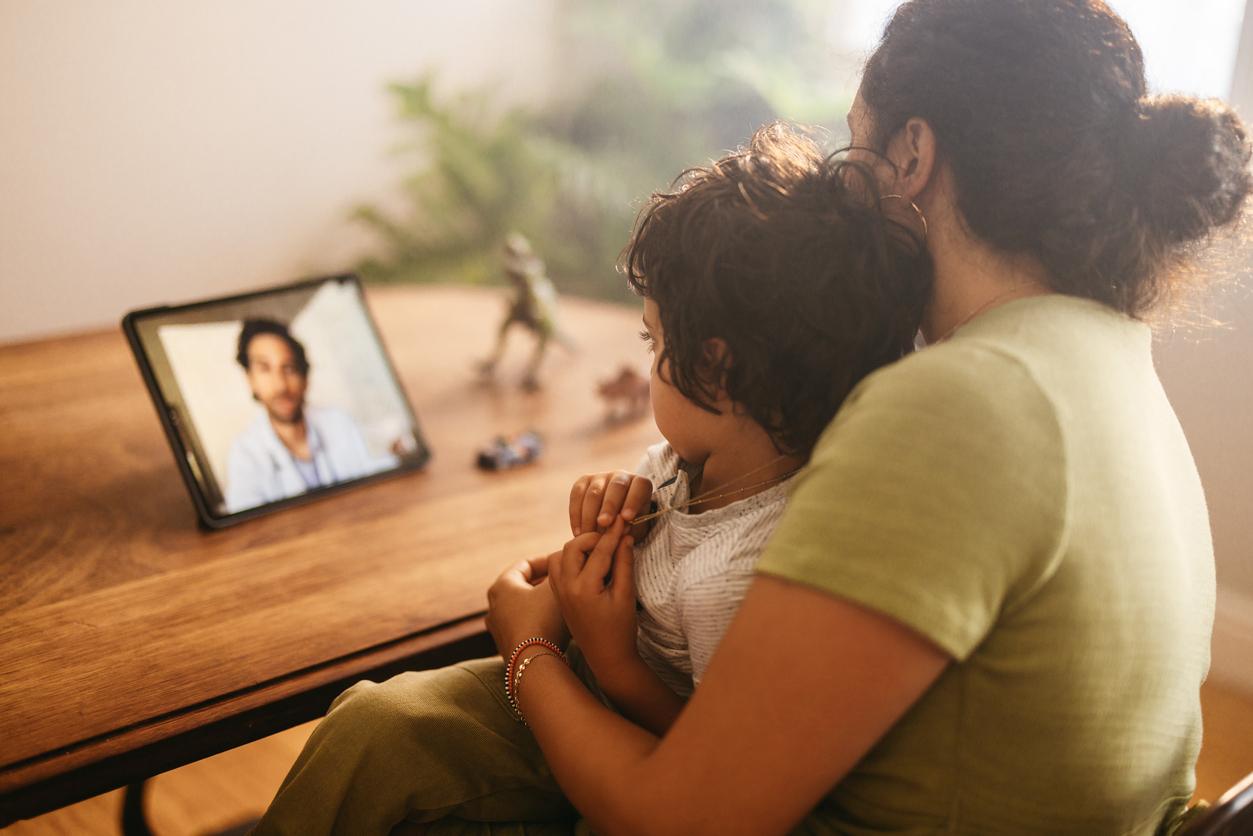When it comes to antibiotic prescribing, not all telemedicine is equal.
That's the takeaway from a study published last week in JAMA Network Open by researchers from the University of Pittsburgh and Harvard Medical School. The retrospective study of more than 28,000 telemedicine visits involving children with acute respiratory tract infections (ARTIs) found that telemedicine providers who were integrated within a primary care practice were less likely to prescribe an antibiotic than virtual-only, direct-to consumer (DTC) telemedicine providers. They were also less likely to make a diagnosis that may warrant an antibiotic.
The findings are noteworthy, because previous studies have found that telemedicine is associated with higher rates of antibiotic prescribing in children compared with in-person visits with primary care practitioners (PCPs), which has raised some questions about whether antibiotic stewardship programs should target telemedicine. But the study authors say these new findings suggest that the context in which telemedicine is practiced matters.
Fewer prescriptions with PCP telemedicine
Using a database of medical and pharmacy claims from commercially insured children ages 17 and younger, the researchers compared antibiotic management for pediatric acute respiratory tract infections during telemedicine visits with PCPs versus DTC telemedicine companies in 2022.
Providers that had a total of more than 10,000 total visits in 2022, of which more than 97% were classified as telemedicine, were categorized as DTC telemedicine. Visits were matched based on patient's sex, age-group, medical complexity status, state of residence, and urban-rural status.
Data from 27,686 children (mean age, 8.9 years; 48.9% female) were included in the study, and a total of 14,202 PCP telemedicine visits were matched with 14,627 DTC telemedicine visits. The primary outcome was the percentage of index visits that resulted in the filling of an antibiotic prescription. Secondary outcomes included receipt of a diagnosis that may warrant antibiotics during the index visit, guideline concordance of antibiotic management, and follow-up care received after the index visit.
Overall, PCP telemedicine visits were less likely to result in receipt of antibiotics than DTC telemedicine visits (28.9% vs 37.2%; relative risk [RR], 0.78; 95% confidence interval [CI], 0.74 to 0.81) and less likely to result in a diagnosis in which antibiotics may be appropriate (19.0% vs 28.4%; RR, 0.67; 95% CI, 0.63 to 0.71). Specifically, PCP telemedicine visits were less likely than DTC telemedicine visits to receive a diagnosis of sinusitis (9.9% vs 15.5%; RR, 0.64; 95% CI, 0.59 to 0.69) or acute otitis media (ear infection; 4.0% vs 6.9%; RR, 0.59; 95% CI, 0.51 to 0.59).
In addition, fewer PCP telemedicine visits involved a follow-up visit within 1 to 2 days (5.0% vs 8.0%; RR, 0.63; 95% CI, 0.56 to 0.71), and PTP telemedicine had lower receipt of antibiotics associated with an ARTI revisit than did DTC telemedicine (1.7% vs 3.2%; RR, 0.53; 95% CI, 0.56 to 0.75).
When accounting for diagnosis, rates of nonguideline-concordant antibiotic management were similar for PCP and DTC telemedicine visits (20.2% vs 20.1%; RR, 1.01; 95% CI, 0.95 to 1.07). Among PCP telemedicine visits, nonguideline-concordance was lower for visits completed by pediatricians than for visits completed by family practitioners (13.6% vs 25.4%); a breakdown by individual practitioner specialty was not available for the DTC telemedicine visits.
Context of care matters
The authors say the differences they observed in antibiotic management indicate the issue is less about the modality of care (telemedicine vs in-person) than who is providing the care. PCP telemedicine providers caring for children may be more likely to be pediatricians or family care providers who are trained in pediatric care and have existing relationships with the patients and access to their history and medical records. They can also coordinate in-person follow-up with patients.
DTC telemedicine providers, on the other hand, may lack specific pediatric experience, have no prior relationships with patients, have limited ability to follow up, and may be more motivated by patient-satisfaction scores. These differences, they suggest, could make DTC telemedicine providers more likely to prescribe antibiotics.
As a result, the authors argue that policy makers should avoid regulatory and payment strategies that may favor DTC telemedicine over telemedicine that's integrated into primary care. For example, lower insurance payments for virtual care relative to in-person care may lead primary care practices to avoid investing in telemedicine altogether.
"If primary care practices cannot or choose not to maintain telemedicine infrastructure, families interested in telemedicine turning to virtual-only sites may experience fragmentation and lower quality of care," they wrote.
They conclude, "Based on these results, it appears that evolving telemedicine policy may need to account for different models and quality of telemedicine care and should support ongoing integration of telemedicine within pediatric primary care."
If primary care practices cannot or choose not to maintain telemedicine infrastructure, families interested in telemedicine turning to virtual-only sites may experience fragmentation and lower quality of care.
























